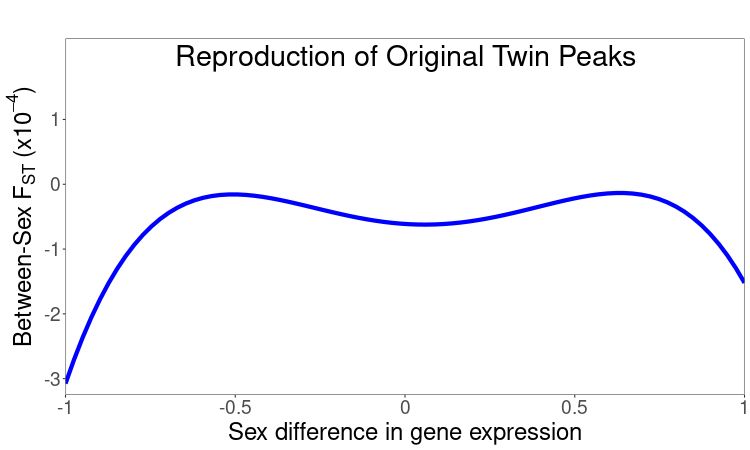Matt Ming
@mattjming.bsky.social
Alas, across 34 human tissues, we find no evidence for a general, genome-wide relationship between sex-differential expression and SDS. (8/14)

January 14, 2025 at 10:35 PM
Alas, across 34 human tissues, we find no evidence for a general, genome-wide relationship between sex-differential expression and SDS. (8/14)
We thus revisit the interpretation that a Twin Peaks pattern suggests sex-differential gene expression drives SDS. We find 21.2% of empirical null samples result in Twin Peaks, so Twin Peaks is consistent with no relationship between sex-differential expression and SDS. (6/14)

January 14, 2025 at 10:35 PM
We thus revisit the interpretation that a Twin Peaks pattern suggests sex-differential gene expression drives SDS. We find 21.2% of empirical null samples result in Twin Peaks, so Twin Peaks is consistent with no relationship between sex-differential expression and SDS. (6/14)
In our manuscript, we found caveats to the Twin Peaks theoretical expectation. (5/14)

January 14, 2025 at 10:35 PM
In our manuscript, we found caveats to the Twin Peaks theoretical expectation. (5/14)
Cheng and Kirkpatrick explicitly modeled the relationship between SDS and sex-differential expression and describe a “Twin Peaks” pattern which arises when sex-differential expression drives SDS. (4/14)
doi.org/10.1371/jour...
doi.org/10.1371/jour...

January 14, 2025 at 10:35 PM
Cheng and Kirkpatrick explicitly modeled the relationship between SDS and sex-differential expression and describe a “Twin Peaks” pattern which arises when sex-differential expression drives SDS. (4/14)
doi.org/10.1371/jour...
doi.org/10.1371/jour...

